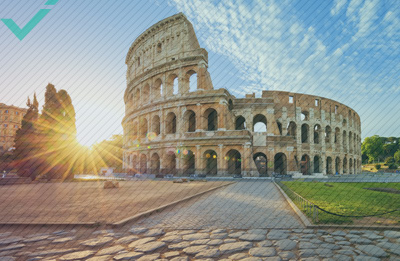SEO EXPLAINED: THE IMPORTANCE OF INTERNAL AND EXTERNAL LINKING
Internal and external links have a huge impact on how search engines perceive your website and content. Internal links play a key role in building the architecture of your site, whereas external links can help legitimise your content as authoritative and relevant to your niche. Read on for an in-depth look at what internal/external links are, how they work, and how you can use them to positively influence your site’s ranking on Google and other search engines.
WHAT ARE INTERNAL LINKS AND WHY ARE THEY IMPORTANT?
Internal links are hyperlinks that link from one webpage on a domain to another page on that same domain. For example, if we inserted a link to our homepage in this post, that would be considered an internal link. Internal links are important for 3 main reasons. First of all, they help users navigate your site. This is obviously really important from a usability point of view, as the right links can help enhance a user’s experience on your site.
Secondly, internal links help solidify your site hierarchy. If you haven’t heard of this concept before, don’t fret; site hierarchy is little more than a way to organise all the information on your website. The top of the hierarchy will usually include a number of categories which then filter down into subcategories, and so on. Internal links can help solidify the hierarchy of your site by promoting the flow from larger categories to smaller ones.
Thirdly, internal linking helps spread link equity around your website. Link equity is basically the flow of ranking power that Google associates with links. If, for example, a very authoritative and high-ranking site links to a smaller site without such a high search ranking, Google might see that as a kind of “vote of confidence” from the more authoritative site, which could in turn benefit the ranking of the smaller site.
HOW TO USE INTERNAL LINKS PROPERLY
Internal linking should be a key aspect of every website’s SEO strategy. Below, we’re going to outline a few critical concepts to help you improve how you use internal links around your site. Think usability first. The main role of your internal links should be to improve the navigation of your site and solidify its structure/architecture. Take a look at all your internal links and ask yourself whether they are improving the usability of your site. If not, they probably aren’t needed.

Search engines use “spiders” to crawl your website. In order to rank your site, the content within it needs to be reachable via the right navigation tools. Again, this is where internal links come in. Using a tool like Moz’s Link Explorer, you can take a look at the link structure of your website. Keep your eyes peeled for pages within your site that are missing clear link pathways and address them. This will immediately help Google and other search engines “see” the various pages of your site.
Review your site hierarchy. This should look like a pyramid; the top should be your homepage, which then clearly leads to the different categories and subcategories and their individual pieces of content. Connecting the different levels of your pyramid should be one clear, crawlable internal link. Keep link equity in mind. Rather than having 10 different links pointing back to your site, we recommend keeping your internal links to a minimum, allowing the equity from your bigger pages (like your homepage or main category pages) to trickle down to the other pages.
WHAT ARE EXTERNAL LINKS AND WHY ARE THEY IMPORTANT?
External links, as you probably gathered from the name, link from one domain to another entirely separate domain. For example, the link we included to Moz’s Link Explorer above is an external link. Whereas internal links play a key role in maintaining the structure and link equity within your own site, external links help keep your content relevant and authoritative, as well as spread link equity all around the web.
You can use external links to help make your content more authoritative. High-authority outbound links work much the same way as using citations in an academic essay. Just like source citations help legitimise an academic thesis, outbound links help legitimise your content. As a result, users are more likely to consult and engage with your content. To Google, this says that your content is considered a good source on the keyword/topic you’re targeting, and encourages it to rank your content higher.
You can see this just by running a simple Google search. Look at the top results; we guarantee they’ll include links to high-profile sites and sources. Wikipedia, for example, uses a lot of external links to academic studies, interviews with experts, and other authoritative sources. As a result, Wikipedia continually tops search results for a wide variety of different searches. Receiving a link from another domain works much the same way. If one of your blog articles gets linked to from another authoritative site working in your industry or niche, Google sees this as a sign that you’re content is a solid source of information.
HOW TO USE EXTERNAL LINKS PROPERLY
External linking, just like internal linking, should be a big part of your SEO strategy. Below are a few tips to help you use external links properly and maximise the benefits they can offer your site. Pay special attention to authority. Don’t just stuff your content full of links from random sites you found in Google’s back pages. Instead, always include links to the best possible content you can find. This can include academic studies, articles from government pages, or info from other industry experts. Treat your links like academic citations, and you’ll do this automatically.
Make value your #1 focus. Google is concerned with giving its users the best possible experience. You should do the same. Set out to make your website the best possible resource relevant to your niche. If you’re a marketing agency writing a blog article on the best tips for creating better content, for example, strive to make your article the top resource on the topic and use high-quality external links to drive that point home to your users.

Set all your external links to open in a new tab or window. If you don’t, you run the risk of pushing traffic away from your site. This could potentially drive up your bounce rate (how quickly people leave your site), which is another key metric Google uses to assess the value and authority of a site. Pay close attention to the anchor text of your links. Wherever possible, avoid using anchor text like “this” or “here”. Instead, try to insert your links creatively using text that relates to the subject of the target page you’re linking to.
Be balanced. Having too many low-quality external links in your content can be just as detrimental to the ranking of a page as having no links at all. Remember to focus on quality and always ask yourself whether a link is helping enhance the quality of your content for the end user. Avoid manipulating your external links. Try to avoid linking strategies that involve manipulative techniques like creating multiple domains that link to each other or receiving payment in return for links. Google’s algorithms are getting ever more complex and can pick up on this kind of behaviour.
HOW SEARCH ENGINES USE EXTERNAL LINKS
To help you improve your external linking strategy, here’s a quick rundown of how search engines use external links to affect their ranking of websites:
1: TO MEASURE POPULARITY
External links are a great way for search engines to measure the popularity of a website. Google’s original PageRank algorithm used external links almost like votes; the pages that got linked to the most for a specific topic or keyword were considered the most popular and got a boost in their ranking. Today, this algorithm is much more advanced, but it still works on these basic principles. That’s because external links are much easier to measure than traffic data, which is usually stored on private servers.
2: TO MEASURE RELEVANCE
Search engines also use external link data to measure how relevant websites are for certain topics. This is where anchor text is really important. If this article receives a link from an anchor text that reads something like “tips for internal and external linking”, Google will take that as a cue that this page contains relevant information on this topic.
FINAL WORD ON INTERNAL AND EXTERNAL LINKING
Internal and external links are both important metrics for search engines. Your SEO strategy should integrate a combination of both; internal links to help improve the navigation and hierarchy of your website, and external links to make your content relevant and authoritative.


